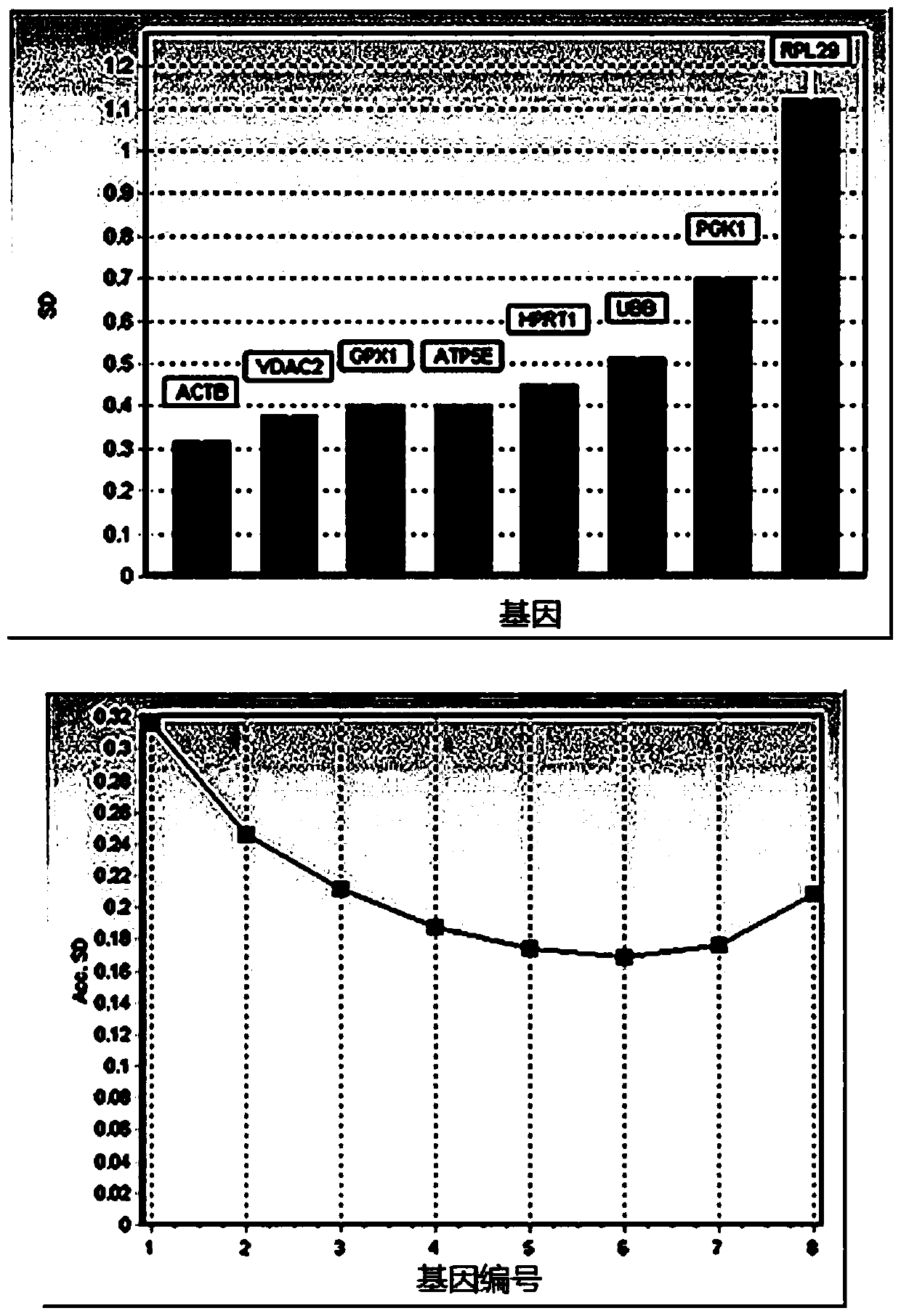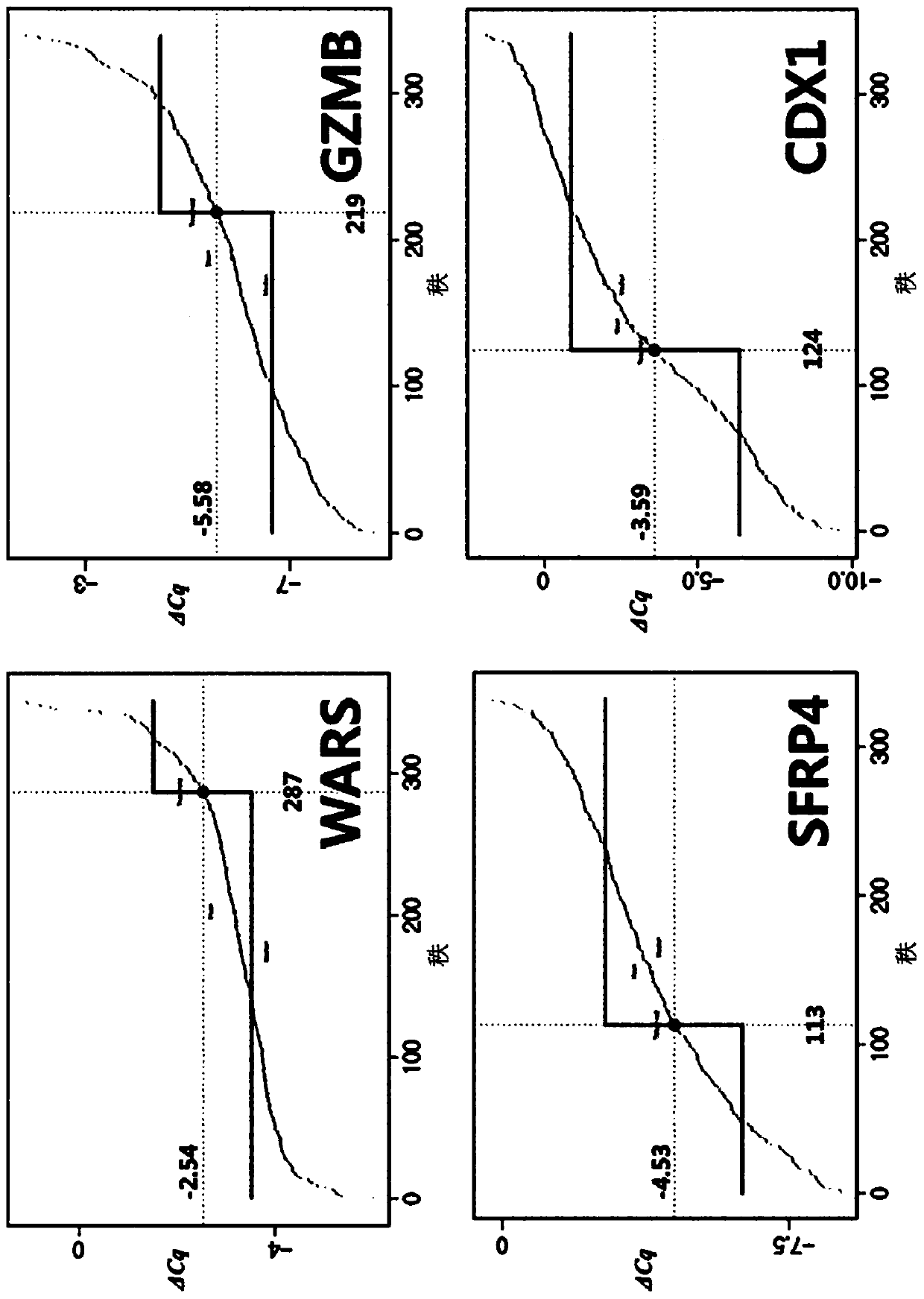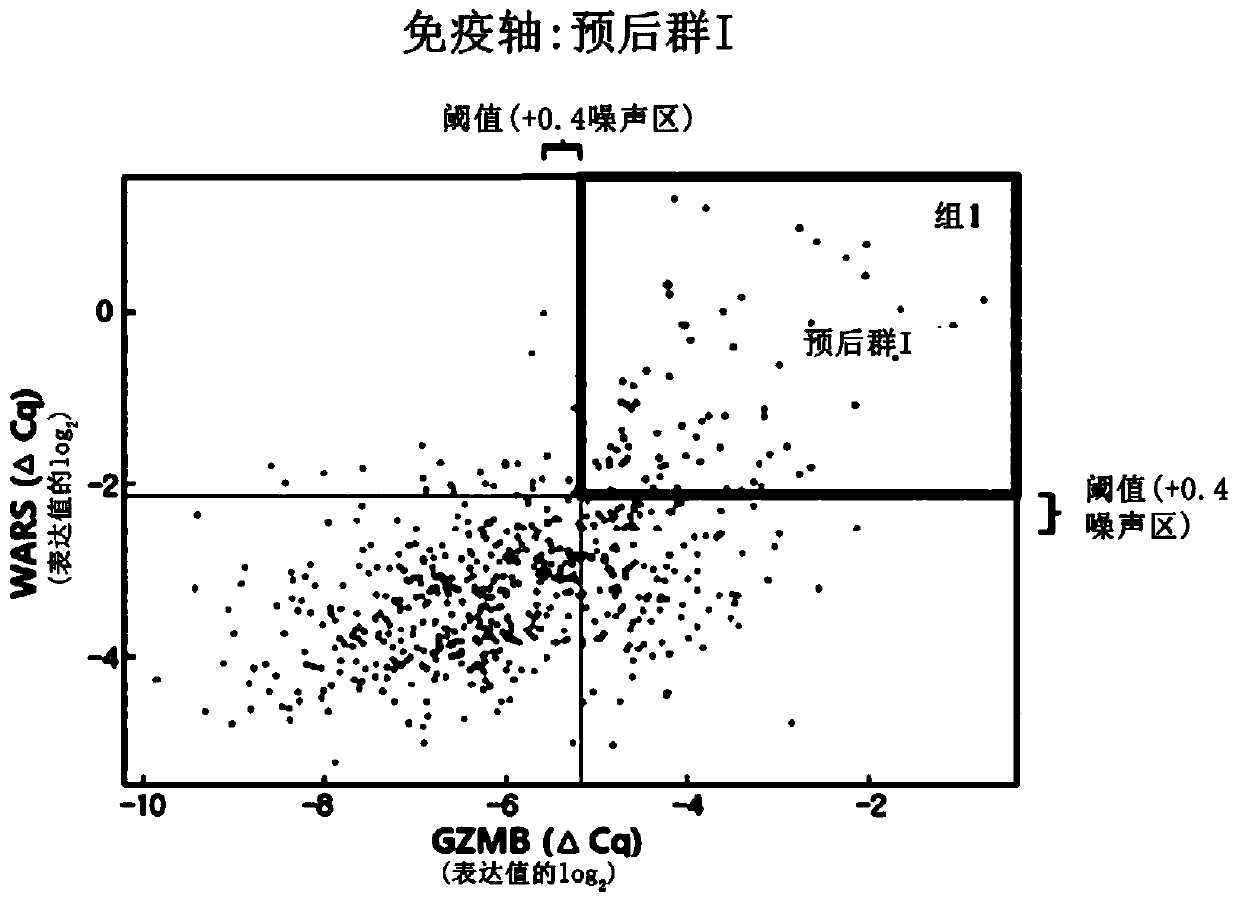System for predicting post-surgery prognosis or anticancer drug compatibility of advanced gastric cancer patients
An anti-cancer drug and suitability technology, applied in the system field of prognosis or anti-cancer drug suitability, can solve the problem that there is no method for predicting the prognosis of anti-cancer treatment, etc.
- Summary
- Abstract
- Description
- Claims
- Application Information
AI Technical Summary
Problems solved by technology
Method used
Image
Examples
Embodiment approach
[0068] The term "reference gene" as used herein refers to a gene that is always stably expressed. That is, as a gene regularly expressed in any tissue, the reference gene is used to compare the expression level of the marker gene to check the expression level of the marker gene. That is, even when gene expression levels are measured, it is difficult to determine that the measured value is biological variation due to quality differences between samples and variations depending on storage facilities. Therefore, the amount of gene expression (ΔCq) between samples was determined by normalization. As conventional normalization methods, a method using quantiles, a global normalization method, and a method using a reference gene can be used, but in the present invention, a normalization method using a reference gene is used. In addition, the method using a single gene as a reference gene may reduce the precision, so multiple genes can be selected and the degree of variation can be s...
Embodiment 1
[0136] Development of an algorithm for predicting the prognosis of advanced gastric cancer or the probability of suitability of anticancer drugs
[0137] A 3 mm hole containing more than 50% of the tumor was fabricated on the paraffin-embedded tissue of advanced gastric cancer, and RNA was extracted from the punched tissue according to the protocol. Obtain at least 400 ng of total RNA. The required Q.C element is A260 / A280 greater than or equal to 1.8.
[0138]For RT-qPCR experiments, using the nProfiler I kit, total RNA (400 ng / 18 μl) from the patient was used, and the gene-specific primer (GSP) mix (3 μl) was dispersed in the sample. The temperature of a 2720 thermal cycler (Applied Biosystems) was raised to 50°C, and the samples were placed in the cycler. RNA samples were denatured at 65°C for 5 min, then the thermocycler was stopped. For RT, add 6 μl RT buffer and 2 μl RT mix, perform DNA synthesis at 37 °C for 60 min, and keep DNA at 70 °C for 15 min. For qPCR, cDNA ...
Embodiment 2
[0185] Verification of an algorithm for predicting the prognosis of advanced gastric cancer and the probability of suitability of anticancer drugs
[0186] According to the prediction algorithm obtained in Example 1, the significance of prognosis and suitability of anticancer drugs was verified using Kaplan-Meir curve and COX univariate / multivariate analysis (n=307, three samples failed QC).
[0187] Such as Figure 8 As shown by the Kaplan-Meir curve of , it can be seen that there are prognostic differences among the three prognostic groups (prognostic groups I, II and III). The 5-year overall survival rates of the three groups were 83.3%, 71.8% and 58.2%, respectively, indicating that the prognosis group I had the best prognosis among the three groups, and the prognosis group III had the worst prognosis among them.
[0188] [Table 4]
[0189]
[0190] As shown in Table 4, in the COX univariate / multivariate analysis performed on the prognostic groups of the present inve...
PUM
 Login to View More
Login to View More Abstract
Description
Claims
Application Information
 Login to View More
Login to View More - R&D
- Intellectual Property
- Life Sciences
- Materials
- Tech Scout
- Unparalleled Data Quality
- Higher Quality Content
- 60% Fewer Hallucinations
Browse by: Latest US Patents, China's latest patents, Technical Efficacy Thesaurus, Application Domain, Technology Topic, Popular Technical Reports.
© 2025 PatSnap. All rights reserved.Legal|Privacy policy|Modern Slavery Act Transparency Statement|Sitemap|About US| Contact US: help@patsnap.com



